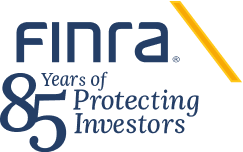Leveraged funds are important for young small time investors like myself to be able to have access to similar financial vehicles that large investors and institutions are able to use. I use the LETF's to be able to construct a balanced 60/40 portfolio that provides a higher risk-adjusted return than a stand alone index fund would be able to. Imo, there are many stocks that bare much
Hurts Investors: It could potentially deny you the freedom to choose investments that could
help you achieve long-term financial security.
Is Arbitrary and Unworkable: FINRAs definition of complex products is so broad, arbitrary and vague that it could ensnare a vast number of commonly used public securities. Tests or
criteria to determine investor understanding are subjective and could lead to
To whom it may concern:
It has come to my attention that FINRA is considering significant and severe restrictions on my right to select my own investment vehicles. I don't need "a parent" to oversee my investments and protect me from myself. Candidly, I think this is an overreach of government powers. I am an experienced investor with a background in the financial
Please allow unrestricted availability of leveraged in inverse ETF's. Many private individuals are choosing to manage their own retirement and investment funds. These instruments provide hedging and seasonal positioning according to market conditions. We simply believe that a hired professional would not put as much attention into the changing market environment as we do.
FINRAs scheme is misguided because it: Hurts Investors: It could potentially deny us the freedom to choose investments that could help us achieve long-term financial security. Is Arbitrary and Unworkable: FINRAs definition of complex products is so broad, arbitrary and vague that it could ensnare a vast number of commonly used public securities. Tests or Upends Our Regulatory System: Under the
Not allowing citizens the ability to invest in inverse or leveraged funds based on that person's net worth or specialize skill is unfair and unwise. I would be unable to hedge my investments in rocky times. Rather than protecting investors from potential losses, these rules would subject them to unnecessary losses. These regulations would not help the average investor and more than
I (the People) should be able to invest in what I want, NOT what you think. That;s just too much regulation (Micromanaging)
I am more than capable of understanding complex investments; if you want to fix ignorance; then we need to FIX OUR SCHOOL SYSTEM to teach our young valuable financial Life Skill.
I (the people) am capable of understanding what I don't know and research it. That is
I know what I am doing in investing. Government has NO BUSINESS budding into my financial affairs under the guise of 'protecting me'. I should not have to go through special process. You are not my Mom or Dad. I am more informed, MBA PhD than most of your regulators. I have invested in leveraged funds successfully for over 30 years. I do not need government (uneducated) to educate me or
1. I not regulators should be able to choose the public
investments that are right for you and your family.
Public investments should be available to all of the public,
not just the privileged.
2. I shouldn't have to go through any special process like passing a test before you can invest in public securities,
including cryptocurrency funds such as BITO. Explain
Thank you for the opportunity to comment on the above propose rule. Individuals should be able to choose the investments that are right for them and not be limited by criteria established by regulators. Information is required to be readily available from the financial companies offering the investment that describe the risks associated with each type of investment in the form of a prospectus or
